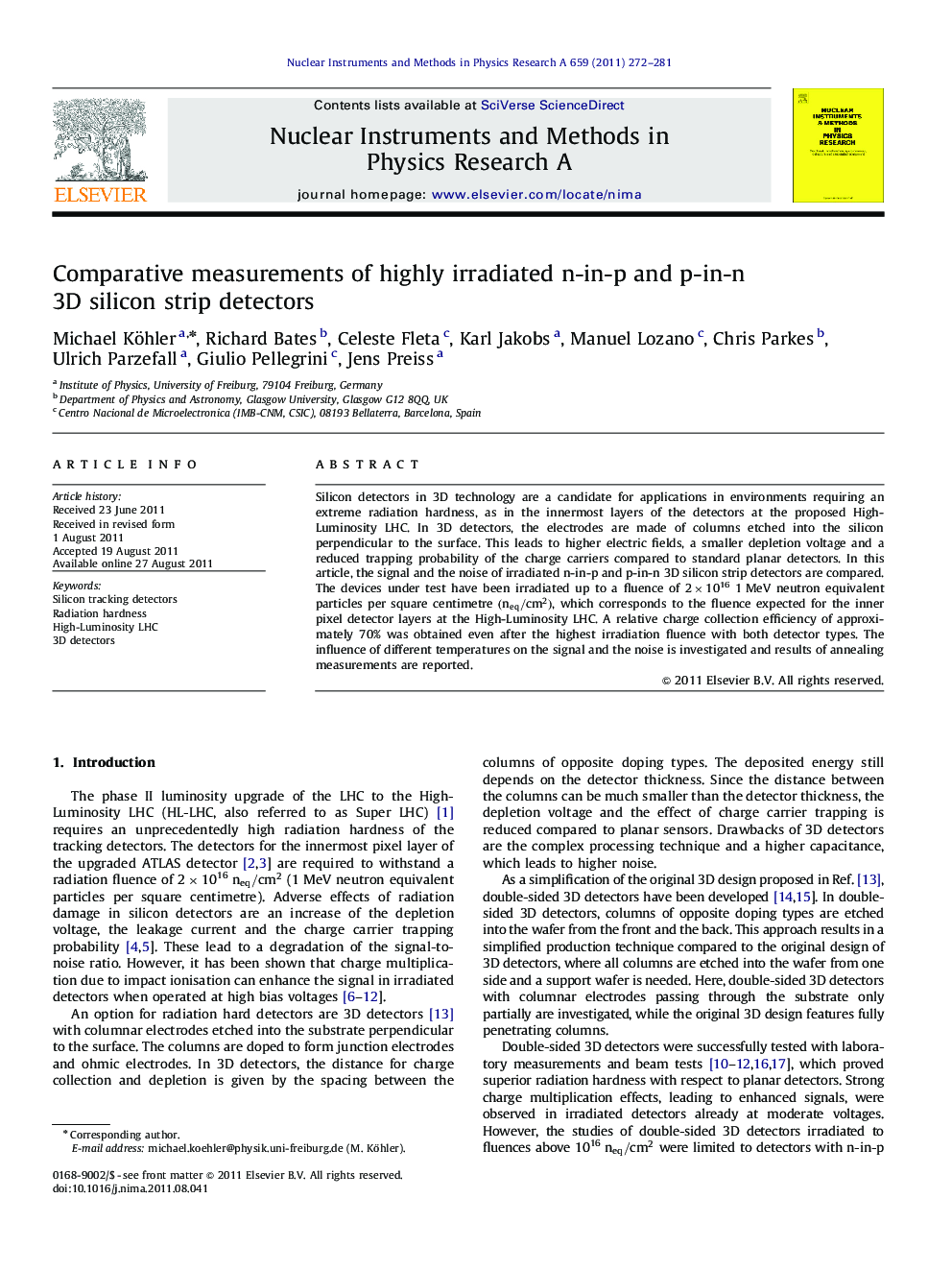| Article ID | Journal | Published Year | Pages | File Type |
|---|---|---|---|---|
| 10715601 | Nuclear Instruments and Methods in Physics Research Section A: Accelerators, Spectrometers, Detectors and Associated Equipment | 2011 | 10 Pages |
Abstract
Silicon detectors in 3D technology are a candidate for applications in environments requiring an extreme radiation hardness, as in the innermost layers of the detectors at the proposed High-Luminosity LHC. In 3D detectors, the electrodes are made of columns etched into the silicon perpendicular to the surface. This leads to higher electric fields, a smaller depletion voltage and a reduced trapping probability of the charge carriers compared to standard planar detectors. In this article, the signal and the noise of irradiated n-in-p and p-in-n 3D silicon strip detectors are compared. The devices under test have been irradiated up to a fluence of 2Ã1016 1Â MeV neutron equivalent particles per square centimetre (neq/cm2), which corresponds to the fluence expected for the inner pixel detector layers at the High-Luminosity LHC. A relative charge collection efficiency of approximately 70% was obtained even after the highest irradiation fluence with both detector types. The influence of different temperatures on the signal and the noise is investigated and results of annealing measurements are reported.
Related Topics
Physical Sciences and Engineering
Physics and Astronomy
Instrumentation
Authors
Michael Köhler, Richard Bates, Celeste Fleta, Karl Jakobs, Manuel Lozano, Chris Parkes, Ulrich Parzefall, Giulio Pellegrini, Jens Preiss,
